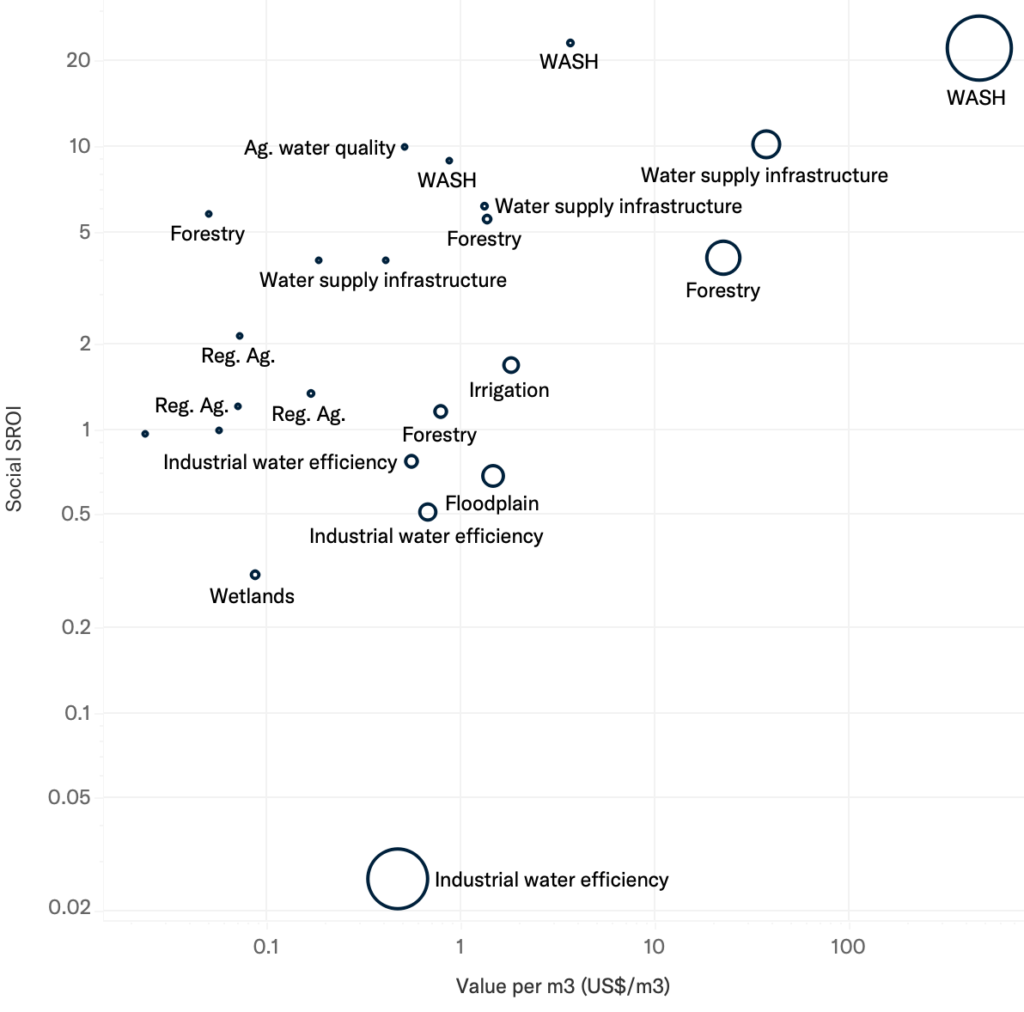In response to emerging water challenges, a growing number of companies are engaging in corporate water stewardship and working with others to achieve more sustainable water management. Many of these companies use volumetric water benefit accounting (VWBA) to estimate volumetric water benefits (VWBs) and identify, select, and monitor projects.
However, experience on the ground has shown that the same VWB in different locations delivers very different societal value. This paper aims to show the link between VWBs and societal value, and to explore the feasibility of using existing methods to quantify and value the societal impact of water stewardship projects.
To achieve this, Bluerisk, the Bonneville Environmental Foundation, and Valuing Impact worked with The Coca-Cola Company, Danone S.A., Ecolab Inc., and Nestlé Waters to estimate the societal value of 22 different water stewardship projects across nine project categories in 11 different countries.
Using social return on investment (SROI) methods coupled with the frameworks from the Natural Capital Protocol and the Social & Human Capital Protocol, the results show that:
- It is possible to measure societal value along a wide variety of impact dimensions.
- All 22 projects evaluated delivered positive societal value, with a combined positive societal impact of $39 million in U.S. dollars (US$) a year.
- The VWB measure is a good indicator of positive societal value, although the measure is not correlated with the magnitude of the effect.
The results of this white paper indicate that estimating the SROI may significantly improve decision-making by offering insights into how projects can be identified, designed, and implemented to optimize for societal value.
The following figures demonstrate that there is an important opportunity to increase the efficiency of water stewardship projects, wether this efficiency is measured per unit of project cost (SROI, or Societal Return On Investment, the ratio between societal value and project cost) or per unit of volumetric water benefit (per m3, also called “value per drop”).

To scale up the magnitude and impact of corporate water stewardship investment, it will be essential to build on the current processes used to identify, vet, and select projects, and to improve and expand the metrics used to measure and report progress by going beyond volumes toward consistent, comparable, and relevant societal value metrics.


